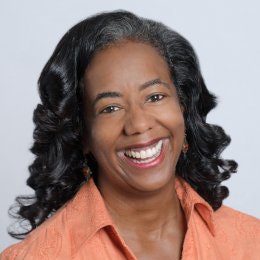Women, and particularly women of color, continue to face stubborn disparities in academia, according to a December data “snapshot” analysis by the American Association of University Professors.
The study relies on the most recent Integrated Postsecondary Education Data System (IPEDS) data from fall 2018 and compares it to research on faculty diversity fifteen years ago. It points to an ongoing gender gap in pay and both gender and racial disparities in academic rank.
“The story here is it’s more of the same,” said Glenn T. Colby, senior research officer at the American Association of University Professors. “The numbers have been pretty flat for years.”
 Dr. Bridget Turner Kelly
Dr. Bridget Turner KellyThe report found that salaries for full-time female faculty members are about 81.2% of their male counterparts’, with women earning $79,368 and men earning $97,738 per year on average. (The IPEDS data lacks salary data disaggregated by race.)
Meanwhile, both women faculty and faculty of color are underrepresented in academia’s highest faculty positions – and overrepresented in its more precarious ones. While women make up 46.7% of full-time faculty overall, among tenure and tenure-track professors, the higher the rank, the lower the percentage of women. Female faculty make up 50% of assistant professors, 45% of associate professors and only 32.5% of full professors with tenure.
Underrepresented faculty, meanwhile, make up a mere 12.9% of full-time faculty members, despite making up 32.6% of the US population. To break it down further, only 5.2% of full-time faculty members self-identify as Hispanic or Latinx and 6% identify as Black or African American, even though they’re 17.5% and 12.7% of the country’s population, respectively.
Those trends – and their intersections – are troubling to Dr. Rana M. Jaleel, assistant professor of gender, sexuality and women’s studies at the University of California, Davis, but they’re not surprising.
“I think it confirms what a lot of people already know just from living and working in this space,” said Jaleel, chair of the American Association of University Professors’ Committee on Gender, Sexuality and Women’s Studies. “… It’s an open secret and this is confirmation.”
 Dr. Rana M. Jaleel
Dr. Rana M. JaleelWhy have these disparities persisted?
For one thing, caretaking – childcare and care for other family members – still disproportionately falls to women, noted Dr. Bridget Turner Kelly, associate professor of education and the program director for higher education, student affairs and international education policy at the University of Maryland. These women can be the “breadwinners” for their families, which puts them at a “cumulative disadvantage” as they try to advance from lower-ranking positions and achieve tenure.
There’s this “ideal worker model that assumes that the worker is male, that the worker makes a wage to support a family and has a partner at home who attends to household duties and childcare,” she said. “And I think men are traditionally thought to be that household breadwinner and women stereotypically shoulder more of the household and caretaking responsibilities.”
Plus, women aren’t socialized to negotiate for higher salaries to the extent men are, Kelly added.
In a system that doesn’t take these things into account, “once you start low, it’s really an uphill battle to earn an equitable wage,” she said.
She’s been asked in an interview what her previous salary was as a guidepost for her future salary, and she found “it’s hard to explain in the moment the gender disparities – especially the racialized gender disparities – and why what I’m making now shouldn’t be what I’m making, according to the market and according to my peers.”
Meanwhile, the concentration of women in non-tenure-track and part-time positions puts them in a vulnerable position, especially during a global pandemic as universities tighten their budgets, Colby noted.
“The issue is if there are cuts, what positions are most likely to be cut?” he said. “It would be the contingent, non-tenure track faculty who are more likely to be women. Surely any kinds of cuts, furloughs and layoffs are hurting women more than men overall.”
And higher education leaders shouldn’t forget the emotional toll caused by a pandemic deeply impacting communities of color, Kelly added. She wants to see universities doing regular “equity audits” of their salaries and policies, like tenure processes.
For Jaleel, part of addressing inequities for female and minority faculty is changing a system that relies so heavily on such precarious work.
“Bias is backed up by structures,” she said. “Do you want to have a business model set up where people are that worried about their future and can’t plan even ten weeks in advance if you’re on a quarter system? It’s just not a good way to run anything. It’s deeply unfair.”
Colby finds that some institutions have made strides, especially toward more equitable salaries. He hopes faculty and administrators will collaborate to continue working on gender equity issues but in the context of a wider discourse that includes the ways that intersects with race, disability, sexual orientation, gender identity and other forms of discrimination.
In recent years, universities have been “coming up with some innovative and promising practices and policies for dealing with these disparities,” he said. “While the overall numbers don’t indicate anything really exciting at this point, outside the numbers, there are some good things happening. So, hopefully in the next couple years we’ll see the needle start to move.”
Sara Weissman can be reached at [email protected].















